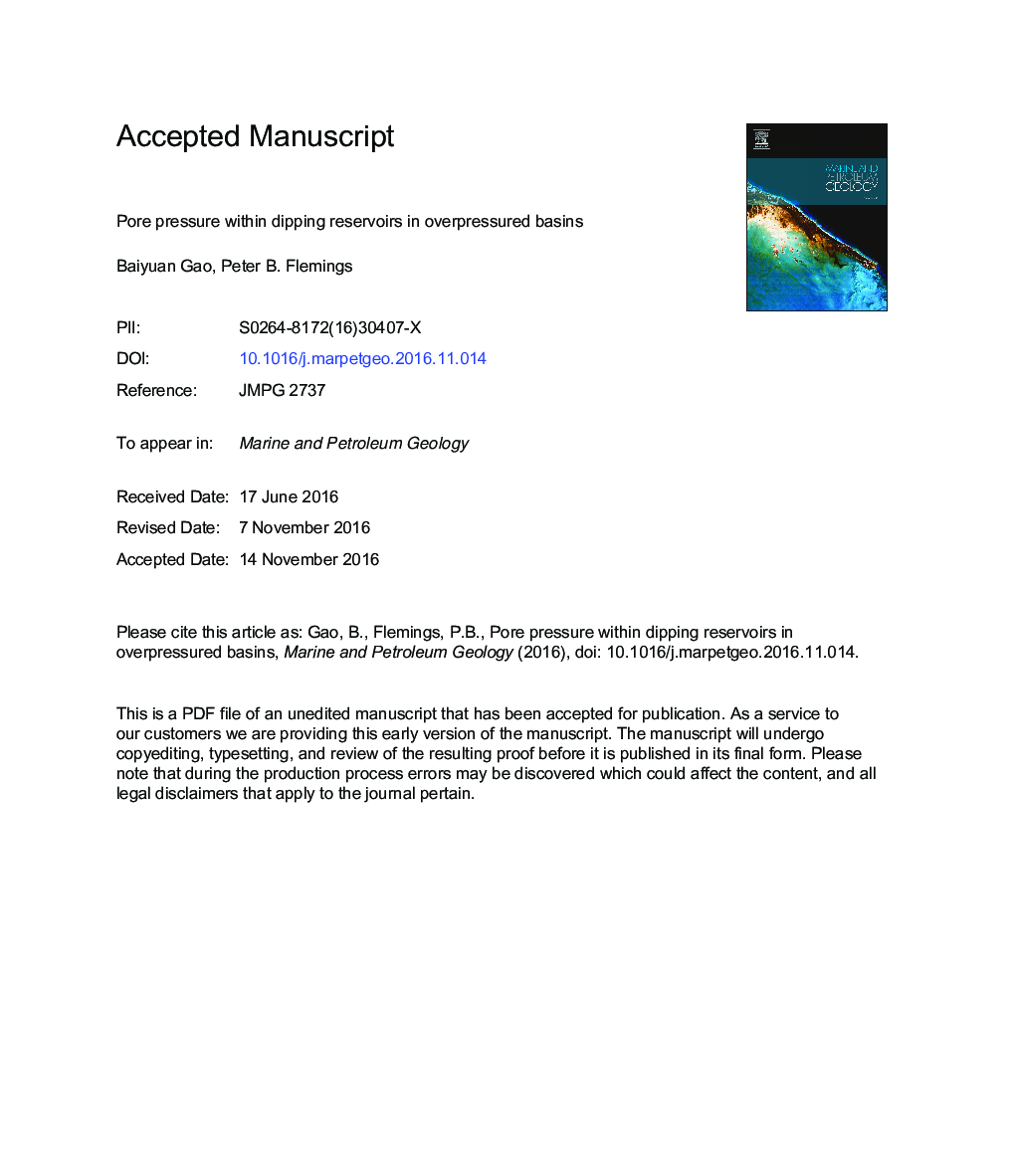| Article ID | Journal | Published Year | Pages | File Type |
|---|---|---|---|---|
| 5782198 | Marine and Petroleum Geology | 2017 | 52 Pages |
Abstract
To predict reservoir pore pressure, we present a one-dimensional flow model that captures complicated two- and three-dimensional flow present in a dipping permeable reservoir encased in overpressured mudrock. The model incorporates the variation of mudrock permeability with effective stress and includes the effect of reservoir geometry. We find that reservoir pressure is lower when stress-dependent mudrock permeability is assumed relative to the case of constant mudrock permeability. Increased structural relief further reduces the reservoir pressure relative to the far-field pressure and increased effective stress (pore pressure is lower relative to the overburden) results in increased reservoir pressure relative to the far-field pressure. If a large fraction of the reservoir area is in deeper areas where the mudrocks are more overpressured, then the relative pressure is higher than cases where the reservoir area remains constant with depth. The model results compare favorably both to pressures predicted by a more complex numerical model that simulates basin evolution and to field observations in the Bullwinkle Basin (Green Canyon 65, Gulf of Mexico). Our model provides a quick workflow to predict excess pressures in dipping reservoirs encased in mudrock within mechanically-compacted basins. It can be used to analyze trap integrity, understand hydrocarbon migration, and improve drilling safety.
Related Topics
Physical Sciences and Engineering
Earth and Planetary Sciences
Economic Geology
Authors
Baiyuan Gao, Peter B. Flemings,
